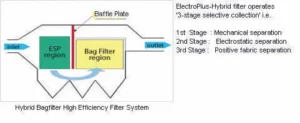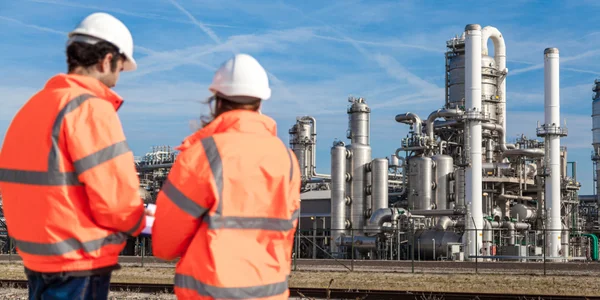فیلترهای هیبریدی
- رسوب دهنده های الکترواستاتیک
- خانه های کیسه هوا معکوس
- فیلترهای پارچه ای
- فیلترهای الکترو هیبریدی
- گوگرد زدایی از گاز دودکش
- کولر اجباری
- اسکرابر
- کارخانه های گاز پاک کن
- سیکلون ها
- چند کلون
- VOC + سیستم حذف بو
- سیستم جمع آوری گرد و غبار
- سیستم استخراج دود
- وسایل حفاظت در برابر انفجار
- فن ها و دمنده ها
- تصفیه فاضلاب
- مبدل حرارتی هوا به هوا
دفاتر
مقر

آلمان
-
فیلتر Intensiv Himenviro Technologies GmbH
Neustraße 45 - 49, 42553, Velbert, Deutschland/Germany - +49 20534200990
دفتر منطقه ای

بریتانیای کبیر
-
فیلتر Intensiv Himenviro UK Limited
47، Bath Street WS13BX، Wallsall West Midlands، بریتانیای کبیر - +44 1922 628893
دفتر منطقه ای

امارات متحده عربی
-
فیلتر فشرده Himenviro Technologies FZE – LLC
مرکز تجاری، منطقه آزاد شهر انتشارات شارجه، شارجه، امارات متحده عربی - +971-556074697
دفتر منطقه ای

هند
-
Intensiv-Filter Himenviro Private Limited
D-247/11, Sector-63, Noida - 201301, Uttar Pradesh, India - +91-120-4642-500
دفتر منطقه ای




هند
-
Intensiv-Filter Himenviro Private Limited
D-247/11, Sector-63, Noida - 201301, Uttar Pradesh, India - +91-120-4642-500
دفتر منطقه ای




هند
-
Intensiv-Filter Himenviro Private Limited
D-247/11, Sector-63, Noida - 201301, Uttar Pradesh, India - +91-120-4642-500
فیلترهای الکترو هیبریدی
فناوری "Electro-Plus-Hybrid Filter" ما یک ارائه دهنده راه حل است که از یک سیستم فیلتر با استفاده از الکتریسیته ساکن بر روی ذرات معلق استفاده می کند تا راندمان جمع آوری بالاتر با افت فشار کمتر باشد. این مشکل افزایش افت فشار را که اغلب به دلیل گرفتگی کیسه با آغشته شدن ذرات ریز گرد و غبار مشاهده می شود، در مورد سیستم فیلتر کیسه معمولی حل می کند، که عمر کیسه را به میزان قابل توجهی افزایش می دهد. فیلتر هیبریدی یک سیستم فیلتر پیچیده با کارایی بالا و با کارایی بالا است که در آن ذرات گرد و غبار از لایه ساختاری دندریت بر روی سطح کیسه از نفوذ میکروذرات جلوگیری می کند و وضعیت کور شدن کیسه های فیلتر را کاهش می دهد و در نتیجه راندمان فیلتر فیلتر را افزایش می دهد. سیستم هیبریدی فیلتر هیبریدی یک سیستم فیلتر پیچیده با کارایی بالا و با کارایی بالا است که در آن ذرات گرد و غبار از لایه ساختاری دندریت بر روی سطح کیسه از نفوذ میکروذرات جلوگیری می کند و وضعیت کور شدن کیسه های فیلتر را کاهش می دهد و در نتیجه راندمان فیلتر فیلتر را افزایش می دهد. سیستم هیبریدی
برنامه






فرآیند
خدمات ما
مطالعه موردی
سوالات متداول
1. What is a hybrid filter?
A hybrid filter is a device that cleans dirty air by combining two methods: electrostatic precipitation and fabric filtration. First, it uses electrical charges to capture large dust particles. Then, it uses fabric filters to catch smaller particles, making the air cleaner and safer to breathe.
2. How does a hybrid filter work?
A hybrid filter works in two steps. First, the electrostatic section charges and captures large dust particles from the air. Next, the air passes through fabric filters that trap the remaining fine particles. This two-step process ensures efficient removal of dust and pollutants from the air.
3. Why are hybrid filters used in industries?
Industries use hybrid filters to keep the air clean by removing dust and harmful particles produced during manufacturing. This helps protect workers’ health, reduces environmental pollution, and ensures compliance with air quality regulations.
4. What are the benefits of using a hybrid filter?
Hybrid filters offer several benefits:
- راندمان بالا: They effectively remove both large and small particles from the air.
- Energy Savings: The combination of technologies reduces energy consumption compared to using separate systems.
- مقرون به صرفه: They often require less maintenance and have longer lifespans, saving money over time.
5. In which industries are hybrid filters commonly used?
Hybrid filters are commonly used in industries such as:
- تولید سیمان: To control dust emissions.
- Power Plants: To remove fly ash from flue gases.
- Steel Manufacturing: To capture metallic dust particles.
- Chemical Processing: To filter out hazardous airborne particles.
6. How does a hybrid filter compare to traditional filters?
Unlike traditional filters that use only one method, hybrid filters combine electrostatic and fabric filtration techniques. This combination allows them to capture a wider range of particle sizes more efficiently, leading to cleaner air and improved performance in industrial applications.
7. What maintenance is required for hybrid filters?
Maintaining a hybrid filter involves regular inspections to check for wear and tear, cleaning or replacing fabric filter bags as needed, and ensuring the electrostatic components are functioning properly. Following the manufacturer’s maintenance guidelines helps keep the system effective and extends its lifespan.
8. Can existing filtration systems be upgraded to hybrid filters?
Yes, many existing filtration systems, especially electrostatic precipitators, can be upgraded to hybrid filters. This upgrade enhances filtration efficiency without the need for completely new installations, making it a cost-effective solution for industries aiming to improve air quality.
9. Are hybrid filters environmentally friendly?
Hybrid filters are environmentally friendly because they effectively reduce the emission of harmful particles into the atmosphere. By capturing a broad range of pollutants, they help industries meet environmental regulations and contribute to cleaner air.
10. How do hybrid filters contribute to energy efficiency?
Hybrid filters contribute to energy efficiency by combining two filtration methods that work together to reduce the overall energy required for air cleaning. The initial electrostatic stage captures large particles with minimal energy, reducing the load on the subsequent fabric filter stage, which in turn operates more efficiently.








